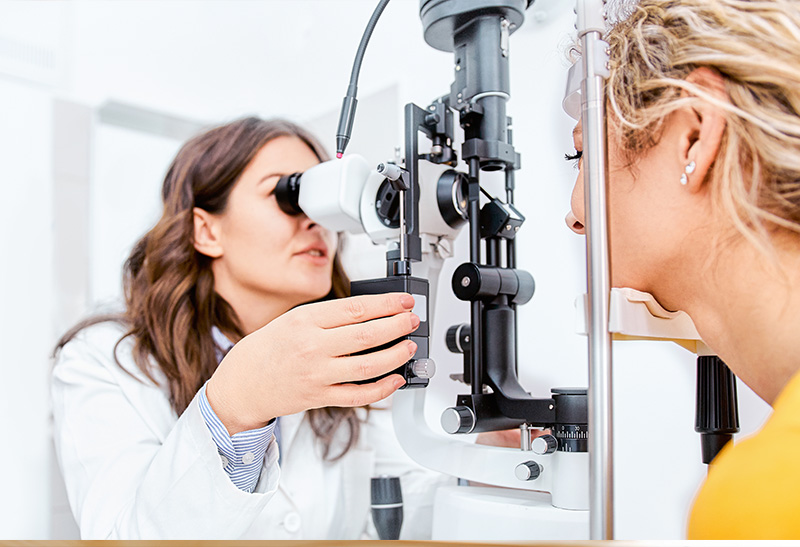All Categories
Featured
When it pertains to sun safety and security, many people concentrate on shielding their skin from hazardous UV rays. Nevertheless, the impacts of UV radiation on your eyes are similarly crucial however typically neglected. Prolonged direct exposure to ultraviolet (UV) rays can cause different eye problems, a few of which may lead to irreversible damages or vision loss. Whether you're outdoors on a sunny coastline or taking a stroll on a cloudy day, comprehending just how UV rays influence your eyes and discovering exactly how to protect them is critical for maintaining healthy vision.
What Are UV Rays and Exactly How Do They Impact the Eyes? UV rays are a kind of unnoticeable radiation discharged by the sun. There are 3 kinds of UV rays:
UVA Rays: These pass through deeply into the skin and eyes, adding to lasting damages. UVB Rays: These are more intense and can trigger surface-level damage, such as sunburn or corneal damages. UVC Rays: These are one of the most damaging but are soaked up by the Planet's atmosphere and seldom pose a straight risk. Both UVA and UVB rays can damage various parts of the eye, consisting of the cornea, lens, and retina.
Short-Term Impacts of UV Exposure. Also a short period of extreme UV direct exposure can damage your eyes. An usual condition arising from this is photokeratitis, frequently referred to as "sunburn of the eye." Symptoms consist of:
Agonizing or red eyes. Level of sensitivity to light. Too much tearing. Temporary blurry vision. Photokeratitis is usually short-term but functions as a tip of the prompt risks of UV radiation.
Long-Term Effects of UV Exposure. Cumulative UV direct exposure over time can lead to a number of serious eye conditions, consisting of:

Cataracts: UV rays increase the growth of cataracts, a condition where the lens of the eye comes to be cloudy, bring about vision problems. Cataracts are a leading reason of blindness worldwide.
Macular Degeneration: The macula, a part of the retina in charge of central vision, can be damaged by prolonged UV exposure, increasing the risk of age-related macular deterioration (AMD)
Pterygium: Typically called "internet user's eye," this problem includes a growth of cells on the white component of the eye, which can cross the cornea and impair vision.
Pinguecula: UV exposure can create yellow-colored places to base on the conjunctiva, causing irritation and pain.
Skin Cancer Around the Eyes: The delicate skin surrounding the eyes is very vulnerable to UV radiation, boosting the threat of basic and squamous cell cancer.
Securing Your Eyes from UV Damage. Fortunately is that protecting your eyes from UV radiation is easy and effective. Below are some necessary tips:
Wear UV-Blocking Sunglasses. Choose sunglasses that block 100% of UVA and UVB rays. Search for labels showing "UV 400" protection. Wrap-around designs provide additional coverage, preventing UV rays from getting in from the sides.
Use a Wide-Brimmed Hat. A hat with a large brim can obstruct virtually 50% of UV rays, supplying additional defense for your eyes and the fragile skin around them.
Prevent Height Sun Hours. UV rays are strongest in between 10 a.m. and 4 p.m. Minimize your outside exposure throughout these hours, or ensure you're appropriately protected if you need to be outside.
Safeguard Your Eyes Year-Round. UV rays are existing year-round, even on cloudy or snowy days. Snow, sand, and water can show UV rays, escalating their results. Make sunglasses a component of your day-to-day routine, regardless of the period.
Take Into Consideration UV-Blocking Get In Touch With Lenses. Several get in touch with lenses now offer UV security, which can be an added secure when paired with sunglasses.
Motivate Eye Security for Children. Children's eyes are more prone to UV damage due to the fact that their lenses are more clear, allowing more UV light to reach the retina. Guarantee they use sunglasses and hats when playing outdoors.
Set Up Normal Eye Examinations. Routine check outs to an eye treatment expert are essential for checking your eye wellness. An optometrist can discover very early indicators of UV-related damages and suggest services, such as prescription sunglasses or UV-blocking glasses customized to your needs.
Final thought. UV rays might be undetectable, yet their effect on your eye wellness is extremely real. From short-term discomfort to long-term problems like cataracts and macular deterioration, the threats of UV direct exposure are too significant to ignore. By wearing UV-blocking sunglasses, limiting your exposure during optimal hours, and scheduling regular eye examinations, you can shield your vision and enjoy the outdoors securely. Keep in mind, your eyes are among your most beneficial properties-- take the required steps to protect them from unsafe UV rays today.
Latest Posts
The Benefits of Regular Car Maintenance at Montclare Auto Repair Reduces Costs
Protect Your Home with Quality Residential Roof
How to Know When Your Car Needs Professional Auto Repair at Montclare Auto Repair
More
Latest Posts
The Benefits of Regular Car Maintenance at Montclare Auto Repair Reduces Costs
Protect Your Home with Quality Residential Roof
How to Know When Your Car Needs Professional Auto Repair at Montclare Auto Repair